Traditional Fermented Seasoning in Korean Cuisine
Dec 02,2021
Traditional Fermented Seasoning in Korean Cuisine
Dec 02,2021
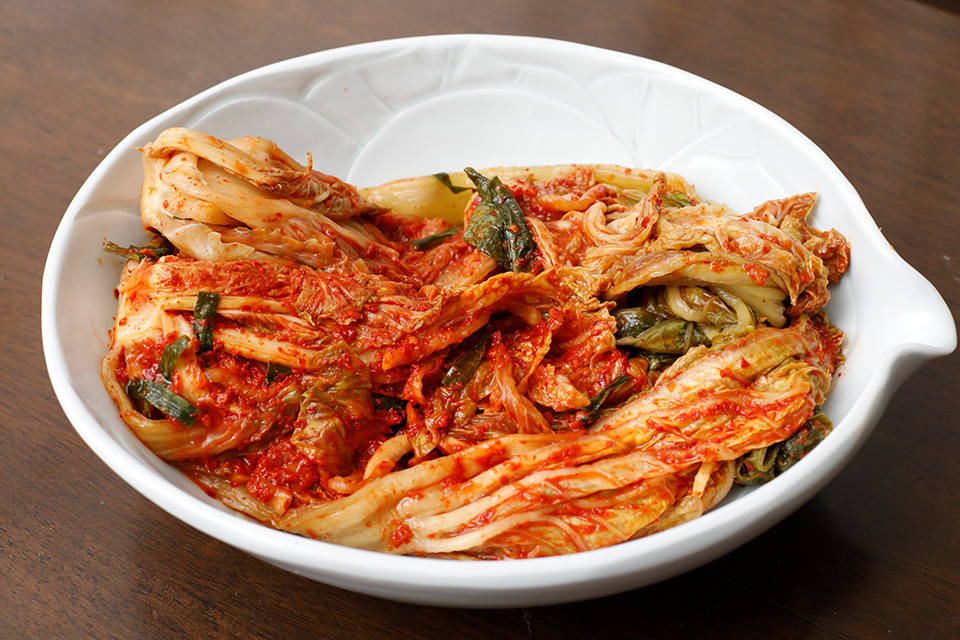

Korean foods like kimchi, jjigae (stews), and namul (seasoned vegetable dishes) are highly popular in Japan. Besides hot, spicy cuisine, Korea also has a wealth of fermented foods.
Here, we talk with Korean food expert Honda Tomomi about the role of salt in traditional Korean fermented seasonings. We also ask her what makes Korea’s enduring food culture so appealing.
“The beauty of Korean cuisine,” says Tomomi, “is that no dish ever gets boring.” The reason, she adds, is that Korean food culture lets nothing go to waste
“In Korea with its cold, harsh winters, fresh vegetables can only be eaten for a short time, so they’ve always been a precious commodity. Many different preserved and fermented foods have therefore evolved so that people can enjoy the same delicious items throughout the year. Plant leaves and roots are dried and added to rice and soups, for example, or infused to make tea. The sheer variety of ways in which ingredients are used is truly impressive.”
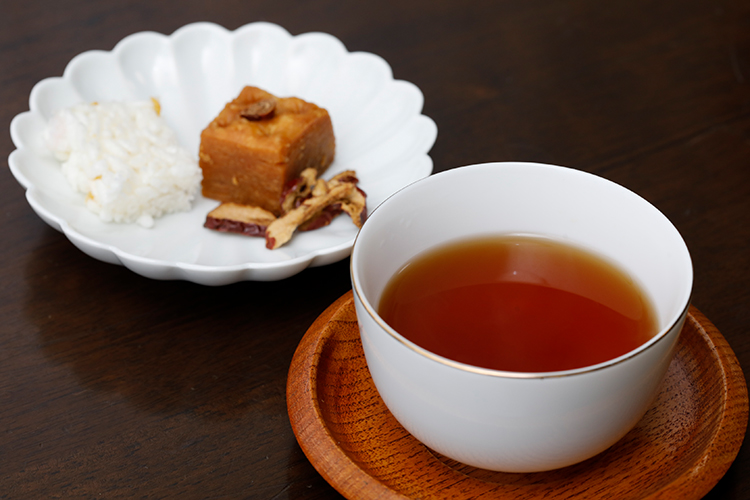
Teas made from corn, jujube, and similar ingredients are common in Korea. Pictured here is homemade radish tea served with yakgwa, a traditional deep-fried confection.
A traditional fermented seasoning called jang underpins the flavor of Korean food. The three most typical forms are ganjang or soy sauce, doenjang or soybean paste, and gochujang or red chili paste. While ganjang and doenjang look a lot like Japanese soy sauce and miso, they’re much saltier and have a powerful aroma like natto (fermented soybeans).
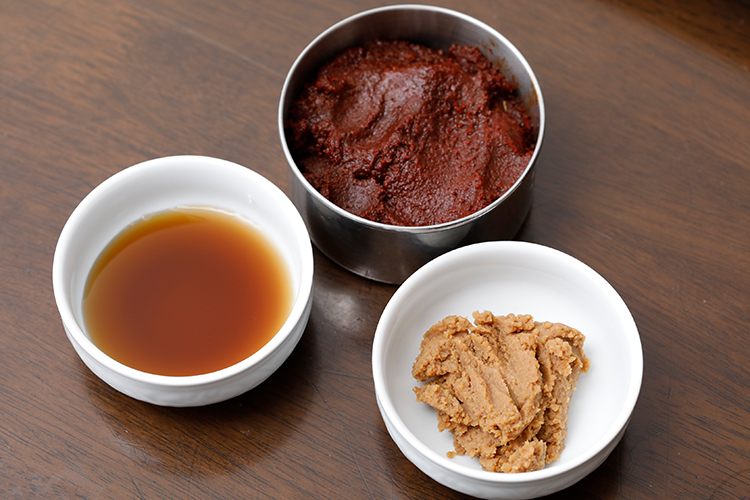
Clockwise from left: ganjang, gochujang, and doenjang
“These three types of jang are used in a variety of dishes, including simmered foods, dressed vegetables, and jjigae and other forms of hotpot. They’re also commonly used in soups, which are virtually indispensable to any Korean meal. Another thing while we’re on the subject. Unlike Japanese miso soup, where the miso is added last, Korean soup tastes better when you put in the doenjang first and boil it well. That draws out the flavor and aroma. As for sashimi, in Korea they dip it in a sauce consisting of gochujang mixed with vinegar and sugar.”
Ganjang, gochujang, and doenjang are all made from meju or blocks of fermented soybeans. Meju are made by shaping boiled and lightly mashed soybeans into blocks and wrapping them in straw. The fermentation process is triggered by the Bacillus subtilis bacteria present in the straw.
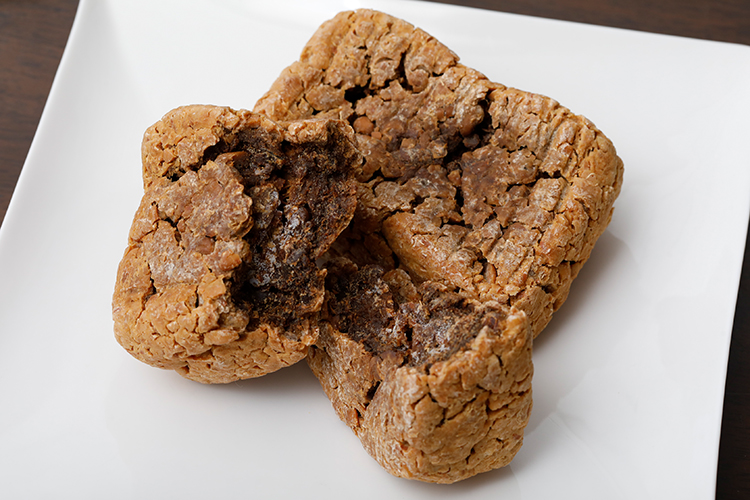
Meju, or blocks of fermented soybeans
“When meju blocks are made in Korean homes, they’re usually fermented over a heated floor. They’re soaked in brine and further aged to produce doenjang, while the leftover liquid becomes ganjang.”
Gochujang, on the other hand, is made with meju in powder form and chili peppers. It has the shortest history of the three seasonings.
“Chili peppers are said to have arrived in Korea in the sixteenth or seventeenth century. Some say they were brought from Japan by Toyotomi Hideyoshi when he invaded Korea. But they didn’t start being used as a food ingredient until at least the eighteenth century, over a hundred years later. Korean food has a reputation for being loaded with chili peppers, but they’re a comparatively new ingredient when viewed over the entire span of history.”
One fermented food can fairly claim to be Korea’s soul food: kimchi, of course. In actual fact, the hot, spicy, fiery red kimchi familiar in Japan only emerged after chili peppers became a common ingredient in Korea. Previously, vegetables pickled and fermented in salt, vinegar, or soy sauce were widely eaten.
“Salt is key to making kimchi and other Korean fermented foods. Korean salt is what is called sea salt, which is crunchier than Japanese salt, with larger grains. It’s also produced differently and contains less bittern. Koreans all say that the best-tasting kimchi is pickled in sea salt. A finer-ground form of this salt is used for seasoning food. Then there’s roasted salt, which is even used at the official residence of the Korean president. It’s made by placing Korean-produced sea salt in a kiln for firing pottery and baking it for at least fifteen hours at 1,300 degrees or more. Now that’s hot. It’s free of impurities and has a mildly salty taste.”
Thus in Korea, different types of salt are used for different dishes.
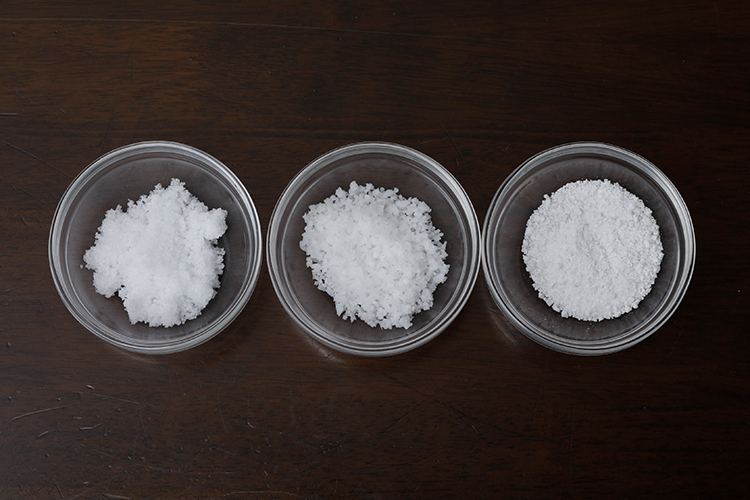
Left: The table salt used in Japan. Center: Korean sea salt. Right: Roasted salt.
“Most households have a separate refrigerator for kimchi in addition to their regular fridge. Here they keep a stock of kimchi of all types, such as store-bought products and kimchi from the family home. Not only do they eat it as is; they also use it all the time in their cooking. The most popular dish made with kimchi must be jjigae.
“In Japan jjigae is often made with pork, but in Korea canned tuna is more popular. First, you give some kimchi a quick stir-fry; then you put in the tuna, liquid and all, add water as needed, and just stew the lost. Next, add your choice of vegetables and tofu. If the taste is too acidic, you can put some sugar in. And that’s it. It also tastes great flavored with a little nam pla.”
Tomomi has experience working at a trading company and a marketing research firm. After striking out on her own, she launched a service that paired people wanting to learn Korean with language instructors. She organized Korean food gatherings as part of her business, and these proved a big hit. She’d always loved cooking anyway, so she started studying Korean food in earnest, and now she’s an established expert in the field. She also serves as tourism ambassador for the city of Mungyeong in North Gyeongsang Province, with which she has a personal connection.
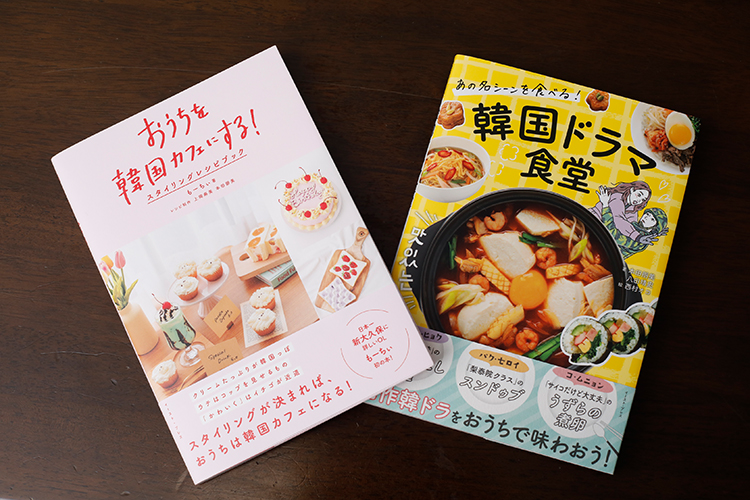
Mungyeong is renowned for a fruit called schisandra berry, which is used in traditional Korean medicine. Tomomi gets sugared schisandra berries sent to her from Korea. She uses them at home for a special tea brewed by adding hot or cold water.
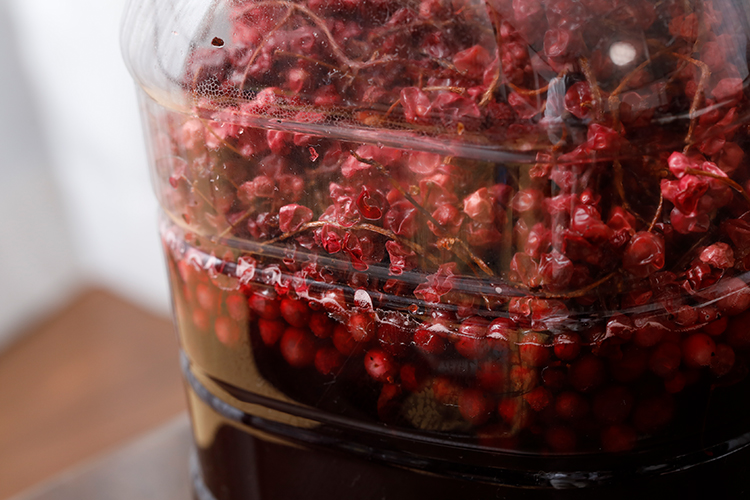
Schisandra berries, called omija or “five-flavored fruit” in Korean. Omija-cha or “five-flavored fruit tea” lets you enjoy five different flavors: sour, bitter, sweet, pungent, and salty.
“When it wasn’t practical to visit Korea or hold offline events due to Covid, I took online classes offered by a language institute affiliated with a Korean university. I wanted to improve my Korean so I could keep up with the latest Korean specialties and stay up to date with information only available in Korea.
“I’m going to continue showcasing Korea’s wonderful people and products, focusing on food. As soon as we’re free to travel to Korea again, I’m planning on studying the food culture and history of each of Korea’s regions.”
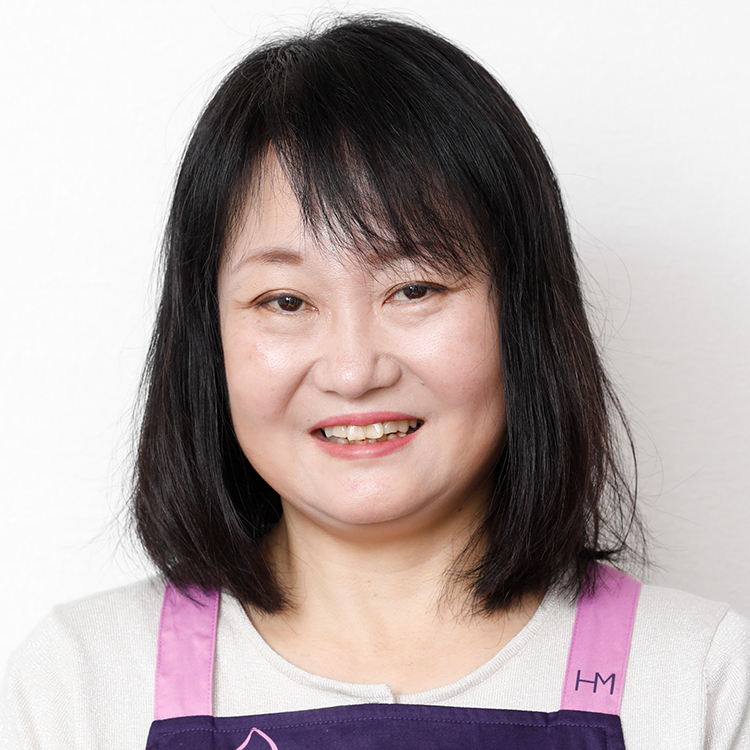
Korean food expert and tourism ambassador for Mungyeong,
North Gyeongsang Province, South Korea
Korean food expert and tourism ambassador for Mungyeong,
North Gyeongsang Province, South Korea
Honda Tomomi has been sharing the magic of Korean food since 2009 by serving as an advisor to Korean restaurants, supplying recipes to corporate clients, and appearing in the media. She is the author of The Korean Drama Diner (published by Eastpress), a beginner’s guide to making dishes featured in the hottest Korean dramas.